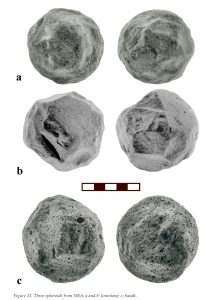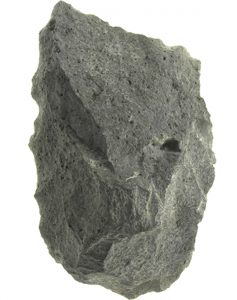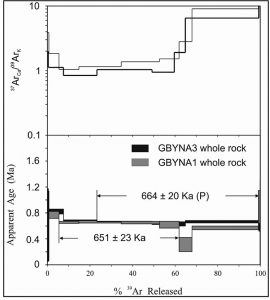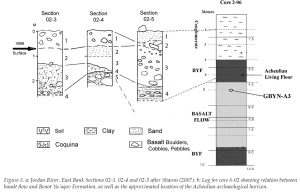In this study, we explore post-depositional damage observed on Acheulian bifacial tools by comparing two assemblages: a collection of archaeological handaxes which shows pronounced damage marks
associated with high energy water accumulation system, and an experimental assemblage that was
rolled and battered in a controlled simulation experiment. Scanning the two assemblages with a precise
3-D optical scanner and subjecting the measured surfaces to the same mathematical analysis enabled the
development of quantitative measures assessing and comparing the degree of damage observed on archaeological and experimental tools. The method presented here enables the definition of morphological
patterns typically resulting from battering and different from intentional controlled knapping. The
most important kinds of damage included the formation of deep, random ‘notch-like’ scars on the lateral edges and substantial degrees of damage to the tip of the tools, but minimal damage to the artifact’s butt.
Quantifying the degree of damage and its location and morphological characters allows us to present
a method by which post depositional damage on archaeological tools can be measured.
Papers and Information



